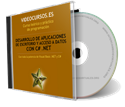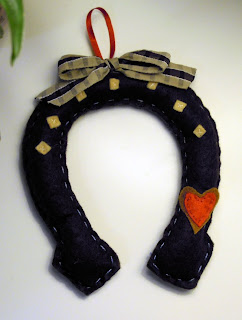Video tutorial: Developing desktop applications and data access with C #  Hello everyone, this time I bring a course that seemed great, the post is taken from www.intercambiosvirtuales.org (where can certainly find lots of material like this).
Hello everyone, this time I bring a course that seemed great, the post is taken from www.intercambiosvirtuales.org (where can certainly find lots of material like this).
The course is divided into 21 modules (each module with its own video for example), which are divided into 3 parts: Design of forms, data access and data and formularios.Bueno no more to say I hope they serve as much as it has served me, I leave the links Download and content of each module.
Part # 01: http://depositfiles.com/files/bysianw62
Part # 02: http://depositfiles.com/files/ubxs2iczj
Part # 03: http://depositfiles.com/ files/zc3jh0w9s
Password / Password: www.intercambiosvirtuales.org
After downloading all the parts in a folder, unzip the first part and generate a. iso which you can open with winrar.
Module1. Create desktop applications I.
- -Create a project type desktop application.
- -How to add forms to a project.
- -form from the perspective of object orientation.
- Properties of the forms.
- -How to choose the form of initiation.
- -main events of the forms. Final-year
- .
Module 2. Create desktop applications II.
- -How to add controls to a form.
-Adapt - controls within the form.
- -Position and size.
- -Align.
- -Anchor and Dock.
- -establish the tab order.
- -Responding to events emitted by the controls.
- -Connect multiple events to a single event handler. Final-year
- .
Module 3. Create desktop applications III. Show
- -shaped forms and NoModal Modal.
- -Add controls at run time.
- -Create access keys for controls.
- -Related Events with keyboard input. Final-year
- .
Module 4. Using standard controls I. Properties
- -common to most controls. "The most basic controls (TextBox, Label, Button).
- -basic lists (ListBox, ComboBox, CheckedListBox).
- -Boolean Controls (CheckBox, RadioButton).
- -Other lists (NumericUpDown, TreeView, ListView). Final-year
- .
Module 5. Using standard controls II.
- Panel and GroupBox.
- -SplitContainer.
- -TabControl.
- -ToolStrip and StatusStrip.
- -PictureBox.
- -ImageList.
- -MonthCalendar.
- -WebBrowser. Final-year
- .
Module 6. Create menus.
- - What is a menu system?
- -Introduction to MenuStrip control.
- -Add upgrades to a ToolStripMenuItem.
- -Hide and disable ToolStripMenuItems.
- -Responding to Events menu.
- -Create context menus with the ContextMenuStrip component. Final-year
- .
Module 7. Dialog boxes.
- -Description of the dialog boxes.
- -OpenFileDialog.
- -SaveFileDialog.
- -ColorDialog.
- -FontDialog.
- -FolderBrowserDialog. Final-year
- .
Module 8. Inheritance between forms.
- -Utility of inheritance between forms.
- -Create a base form.
- -Inheriting from a base form.
- -Modify the base form. Overwrite events
- -base form. Final-year
- .
Module 9. Introduction to Data Access.
- -La need to store data.
- -Introduction to relational databases.
- -Description of the language.
-- providers databases.
- -Description of ADO.NET. Scenarios
- -connected and disconnected scenarios. Final-year
- .
Module 10. Connect to a database.
- - What is the connection string?
- -How to connect to a database. "As
- disconnect a database.
- -How to manage login events. Final-year
- .
Module 11. Operations in a connected scenario I.
- -How to send a command to a database.
- -The types of response to a command.
scalar - -Commands.
- -Commands that return a result set. The DataReader.
- "As iterating through a DataReader. Final-year
- .
Module 12. Online operations in a stage II.
- -Introduction to Microsoft SQL Server 2005 Express.
- -The modification of the data.
- -parameterized commands.
- "The reference to libraries.
- -How to execute stored procedures in the database. Final-year
- .
Module 13. Operations in a disconnected scenario I.
- - What is a DataSet? -Create
- DataSets programmatically.
- -Creating DataSets with the designer.
- -Defining Constraints and relationships in a DataSet. Final-year
- .
Module 14. Operations in a disconnected scenario II.
- -How to add records to a DataSet.
- -How to edit records in a DataSet.
- -How to delete records from a DataSet.
- "As iterate through the records of a DataTable.
- -Iterate related records.
- -Finding records in a DataTable. Final-year
- .
Module 15. Operations in a disconnected scenario III.
- - What Is a DataAdapter?
- -Create DataAdapters programmatically.
- -How to load data into a DataSet using a DataAdapter.
- -Saving and Loading DataSets local disk. Final-year
- .
module 16. Operations in a disconnected scenario IV.
- -Create DataAdapters with the designer.
DataAdapters - -Create the object CommandBuilder.
- "The state of the rows.
- "As the source updates the changes made to a DataSet.
- -Customize the update of the changes. Final-year
- .
Module 17. Operations in a disconnected scenario V.
- "The problem of concurrency.
- -row version.
- -Optimistic Concurrency.
- -pessimistic concurrency.
- -Ways to manage concurrency conflicts. Final-year
- .
Module 18. Operations in a disconnected scenario VI.
- - What is a typed DataSet?
- - What is an XSD schema? Create
DataSets - -established based on a DataAdapter.
- -Data Sources tool in Visual Studio 2005.
- -How to use a typed DataSet. Final-year
- .
Module 19. Operations in a disconnected scenario VII.
- - What is a TableAdapter?
- -As TableAdapters created.
- -How to use a TableAdapter.
- -Using a TableAdapter parámetors.
- -Using direct methods.
- -Extender functionality of the TableAdapter. Final-year
- .
Module 20. Display and edit data using forms I.
- -Ways to manage data from a form.
- -BindingSource control.
-Link - simple controls to a DataTable.
-Link - simple controls at run time.
BindingNavigator - -control.
herramientta - -Use DataSource to create a single record forms. Final-year
- .
Module 21. Display and edit data using forms II.
- -Using the ComboBox as a simple link control.
- -The DataGridView control.
- -Customize the appearance of the cells.
- -CellFormating event of DataGridView.
- -master-detail relationship between two DataGridViews. Final-year
- .




 Hello everyone, this time I bring a course that seemed great, the post is taken from www.intercambiosvirtuales.org (where can certainly find lots of material like this).
Hello everyone, this time I bring a course that seemed great, the post is taken from www.intercambiosvirtuales.org (where can certainly find lots of material like this).